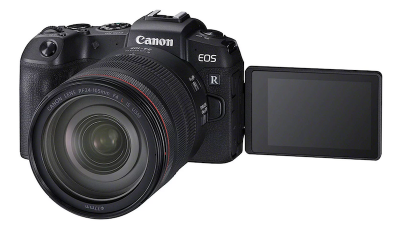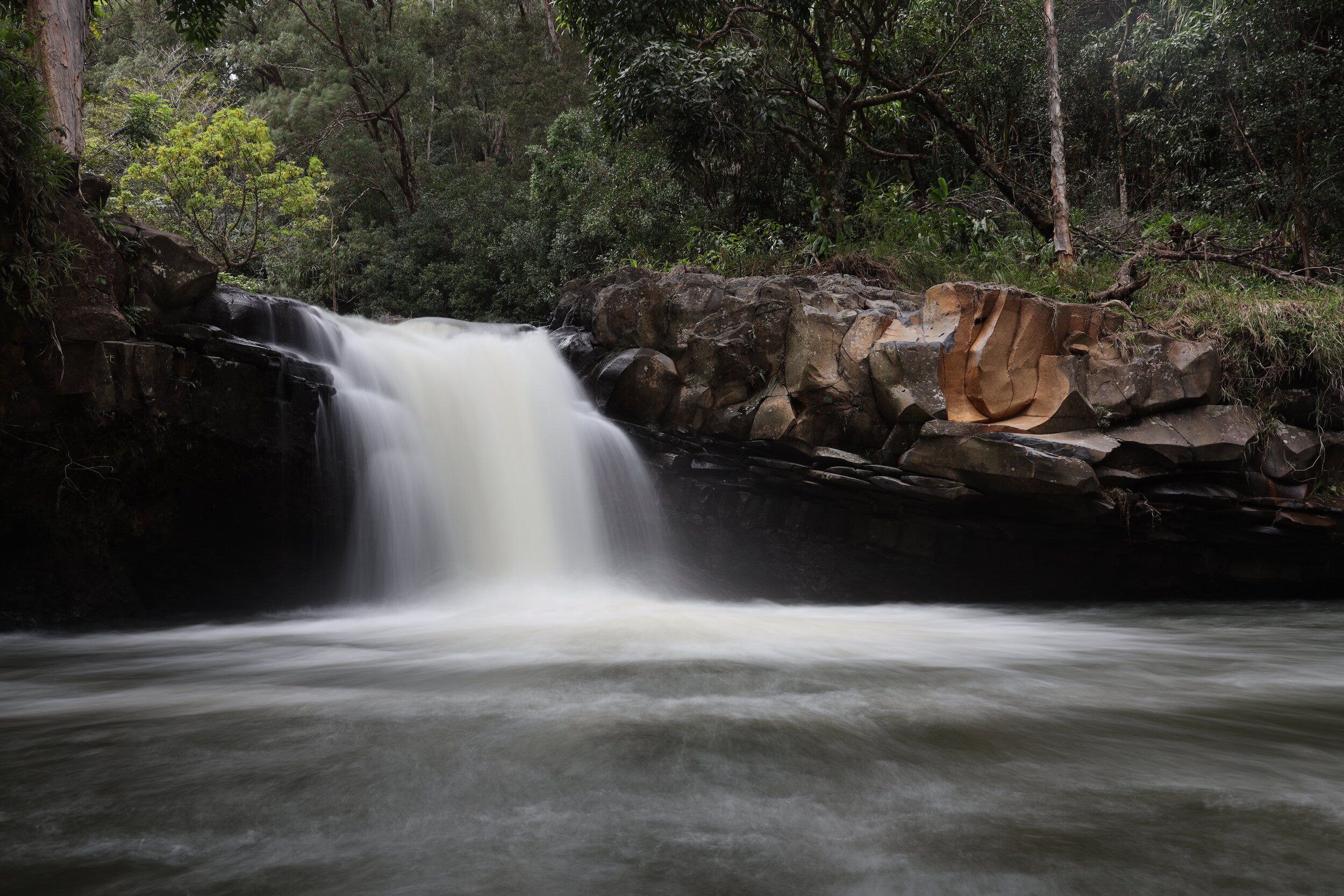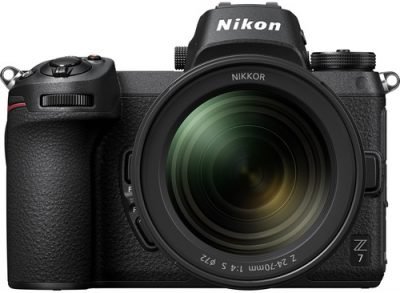Canon Announces the EOS RP
/https://www.youtube.com/watch?v=ZP5-V64vJwgBrand New Full Frame Mirrorless at an Extremely Reasonable PriceCanon has just announced the EOS RP - the second camera in their new, full frame, mirrorless line. Two impressive facts about this camera - A new full frame camera being offered at $1299* and the body size and weight is smaller/less than the Canon Rebel DSLR line.*And that $1299 price includes EOS R adapter to fit EF lenses and a small colored grip too.Full Spec List
26.2MP Full-Frame CMOS Sensor
4K at 25fps at 120Mb/s 8-bit internal
DIGIC 8 Image Processor
Dual Pixel CMOS AF
2.36m-Dot Electronic Viewfinder
3" Vari-Angle Touchscreen LCD
Wi-Fi and Bluetooth Connectivity
I liked the Canon EOS R but felt that at $2399 it wasn't a great value - mostly an AF system that just wasn't as fast as I would like and beaten solidly by the Sony a7iii in AF performance and 4K video. But this RP at $1000 less in a smaller lighter package becomes very compelling. The RP is still going to have the those Continuous AF issues and the crop when shooting 4k is annoying but again, at this price point I can forgive those issues - no other full frame camera is offered at this price point.Canon EOS RP Mirrorless Digital Camera (Body Only) $1299- includes EOS R Adapter- Includes EG-E1 Extension GripCanon EOS RP with 24-105 RF $2199 (Excellent Value)- includes EOS R Adapter- Includes EG-E1 Extension Grip
A post shared by Toby (@photorectoby) on Feb 13, 2019 at 9:44pm PST
We also have word that by the end of 2019 Canon will release 6 more RF lensesThe details of the new Canon RF lenses under development are as follows:The RF 85mm F1.2 L USM is a large aperture mid-telephoto prime lens. It offers excellent performance for advanced and professional portrait photographers and is a widely popular focal length and aperture speed combination for users.The RF 85mm F1.2 L USM DS, with Defocus Smoothing lens technology, is a uniquely designed lens that offers a combination of beautifully smooth defocused bokeh. Featuring a super-fast F1.2 aperture, the lens will help produce breathtaking portraits that will surely stand out from the crowd.The RF 24-70mm F2.8 L IS USM is a high-performance, standard zoom lens for professionals and photo enthusiasts alike – ideal for shooting portraits, landscapes, documentaries or weddings.The RF 15-35mm F2.8 L IS USM, offering a wide angle and fast aperture in a single package is ideal for a variety of shooting applications including architecture, interiors or landscapes.The RF 70-200mm F2.8 L IS USM is a must-have for any professional photographer, especially for those shooting weddings, sports or wildlife. This lens is a great all-around, high-speed, medium telephoto zoom lens and does well to round out any camera bag.The RF 24-240mm F4-6.3 IS USM is the ideal lens for amateurs and advanced amateurs who love to travel, no matter the destination. The versatile, all-purpose lens offers a range of focal lengths for capturing extraordinary shots in a form factor that is both compact and lightweight.
































 Sony has announced a major firmware update for the Sony A9 - More about the functions and enhancements, as well as the link to download the update, can be found below along with some quick thoughts about what this might mean for Sony a7RIII users.
Sony has announced a major firmware update for the Sony A9 - More about the functions and enhancements, as well as the link to download the update, can be found below along with some quick thoughts about what this might mean for Sony a7RIII users.
 Sony has announced the latest addition to the rapidly-growing E-mount lens lineup. The 18-135mm f/3.5-5.6 gives an equivalent 27-202.5mm range when mounted on the α6500, α6300 and α6000 cameras and provides Optical SteadyShot (OSS) stabilization.Holy crap it's been over FOUR years since Sony has released an E-mount lens?! Looking back I can't find anything from Sony for their crop sensor line since the 16-70 f/4 Announced Aug 27, 2013. Third party manufacturers like Sigma have filled in some of the gaps but it is clear that filling out the FE mount line(for the full frame a7/a9 series cameras) was a priority. Now we should see a few more e mount lenses for their crop sensor line - the a6000/6300/6500. Sony needs more affordable lenses in this category to compete with Canon.
Sony has announced the latest addition to the rapidly-growing E-mount lens lineup. The 18-135mm f/3.5-5.6 gives an equivalent 27-202.5mm range when mounted on the α6500, α6300 and α6000 cameras and provides Optical SteadyShot (OSS) stabilization.Holy crap it's been over FOUR years since Sony has released an E-mount lens?! Looking back I can't find anything from Sony for their crop sensor line since the 16-70 f/4 Announced Aug 27, 2013. Third party manufacturers like Sigma have filled in some of the gaps but it is clear that filling out the FE mount line(for the full frame a7/a9 series cameras) was a priority. Now we should see a few more e mount lenses for their crop sensor line - the a6000/6300/6500. Sony needs more affordable lenses in this category to compete with Canon. Based on the quality of recently released lenses I expect this to be a good lens and a strong value, especially for the traveler looking to take just one lens. The compact lens weighs just 325 g (0.72 lb)The new E 18-135mm F3.5-5.6 OSS APS-C Zoom Lens will ship in February 2018 and will be sold for about $600 US and $780 CA
Based on the quality of recently released lenses I expect this to be a good lens and a strong value, especially for the traveler looking to take just one lens. The compact lens weighs just 325 g (0.72 lb)The new E 18-135mm F3.5-5.6 OSS APS-C Zoom Lens will ship in February 2018 and will be sold for about $600 US and $780 CA



 The lens uses a Direct Drive SSM focus motor that Sony claims it has a more direct feel similar to a mechanical focus ring, useful for videographers. It is dust and moisture resistant. Nine circular aperture blades create a smooth bokeh.
The lens uses a Direct Drive SSM focus motor that Sony claims it has a more direct feel similar to a mechanical focus ring, useful for videographers. It is dust and moisture resistant. Nine circular aperture blades create a smooth bokeh.













